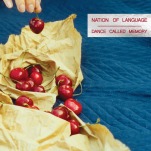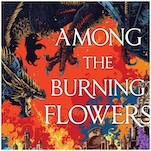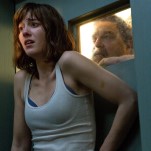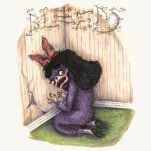Following the Light of Sour Widows
We caught up with the California trio about their anguishing yet optimistic debut album, Revival of a Friend.
Photo by Jaxon Whittington
When I think of Sour Widows, an image of an intricately tangled web of vines nestled in a misty wood comes up. Yet this tangle of vines is dotted with the most alluring exotic flowers you’ve ever witnessed. That dark yet beautiful imagery really captures the ethos of the Bay Area slowcore trio. Dual-band founders/singers/guitarists Maia Sinaiko and Susanna Thomson have endured enough tragedies in their existence as a band for multiple lifetimes. Sinaiko lost a partner to an accidental overdose just before the band began, and Thomson lost her mother to a rare cancer three years ago. The project became an outlet for them to memorialize those feelings and work their way through them. Their debut album Revival of a Friend gives you a peek into that deep forest of anguish and optimism while showcasing the trio’s commitment to challenging themselves musically as a band.
That same forest I pictured the first time I listened to the group is uncannily depicted on the album artwork. Sour Widows thrive in a world of curious musicality. Still, they derived much of the inspiration for this album’s atmosphere from painter Benjamin Steyer, who made the album artwork for Revival of a Friend and inspired the title. Walking you through their winding wood of fantasy and mythology, Sour Widows croon about lost loves and the agony of existence. The album’s mysticism is a complicated web of synth-laden production, dynamic drumming from Max Edelman and layered guitar harmonies from the dual ax-wielding vocalists Sinaiko and Thomson. Revival of a Friend is a transcendental epic that proves the light will always prevail.
Paste Magazine: Talk to me about the writing and recording process for the debut. I know that there were delays dealing with COVID-19 and personal circumstances, so it took a little longer than you anticipated to get the record out.
Susanna Thomson: We very carefully planned out the recording process. We did a lot of tempo mapping—we decided to multitrack the songs on the record since many were pretty complicated. We had a specific vision of wanting to represent all the parts of the songs clearly. We discovered in preparing to record the record that the natural feel of many of our songs have pretty drastic tempo changes. Maia and I spent a lot of time in Pro Tools mapping out where there should be a BPM increase or decrease. That was something new that we hadn’t really tried doing before. Each time we go into the studio, we like to try something different to see how it works for us and just get more experienced with recording in general.
Maia Sinaiko: All of that creative work was really fun, but the actual legwork of sitting down and demoing everything tempo mapping was pretty excruciating, to be honest with you.
What were some of the most significant differences in the process this time? I know that Crossing Over was mostly self-produced with some help from Cody Hamilton, but for Revival of a Friend, you worked with La Luz’s Maryam Qudus.
Sinaiko: We didn’t record the last EP in a studio. It was all done from various home setups, so it was really stripped down. The sound of this album is very different—it’s a lot bigger. We wanted to maximize the experience of getting into a studio and having that resource.
Outside of working through your personal strive and grief, which you have discussed before, what were some of the main influences for the album thematically?
Thomson: We had a lot of visual influences for the record—especially Ben Steyer, a painter we all love. We licensed the use of his painting “Revival of a Friend” for the album artwork, which is also where we got the title. He builds fantasy scenes and worlds in his work with recurring themes. We all really connect to the way that there’s this interplay between darkness, creepiness and heaviness, but the works are also very magical, playful and vibrant. I feel like death is represented a lot in his work, but there’s also a mischievous nature. That whole emotional landscape resonates with me a lot, and I think about how this collection of songs sounds together and like what they represent. We sing a lot about death and grief, but there’s also a strong will to live in our music.
What is it like having those really vulnerable moments in your life entombed in these songs?
Thomson: In the moment, it’s various versions of processing an experience and wanting to preserve something outside of yourself to both enshrine and release it. The relationship that you form with the song changes over time. Often, it’s not until someone specifically asks me about a song I wrote a few years ago that I measure the distance between where I am now and where I was when I wrote the song.
-

-

-

-

-

-

-

-

-

-

-

-

-

-

-

-

-

-

-

-

-

-

-

-

-

-

-

-

-

-

-

-

-

-

-

-

-

-

-

-








































